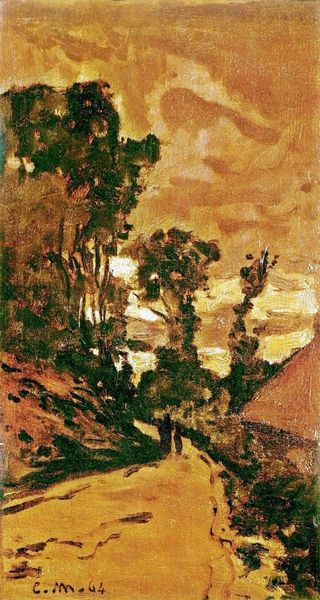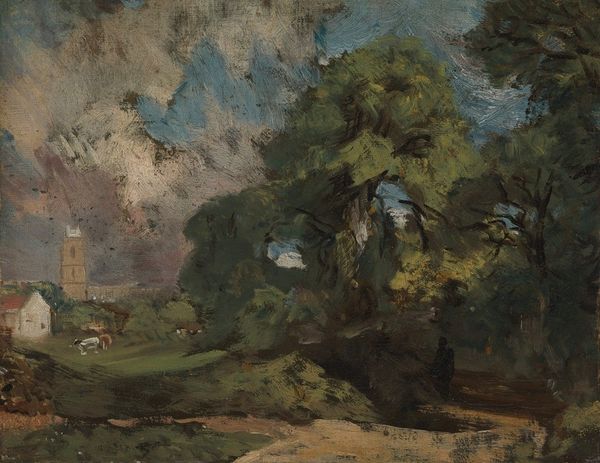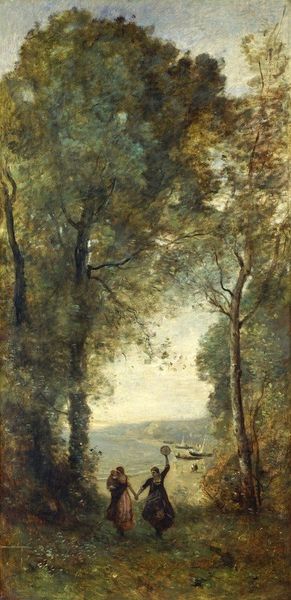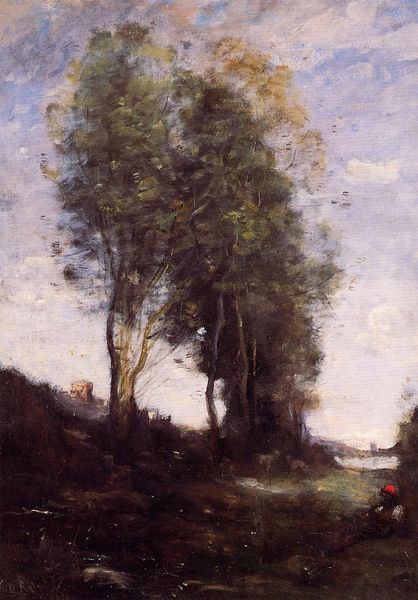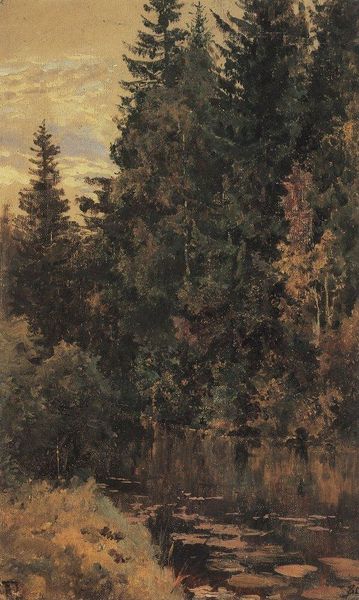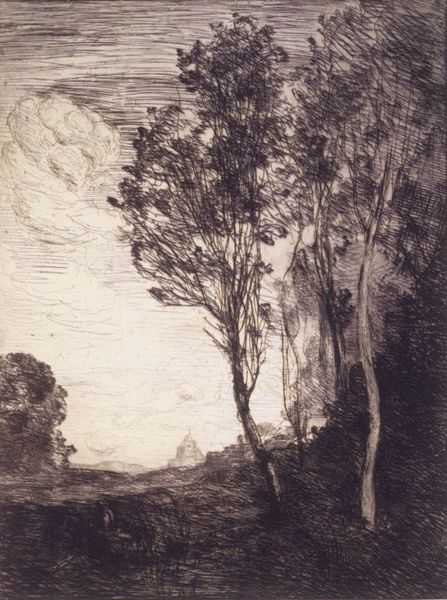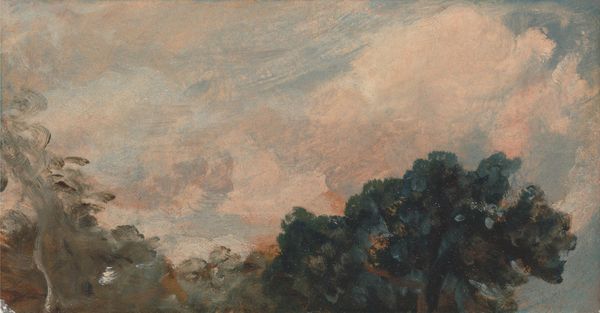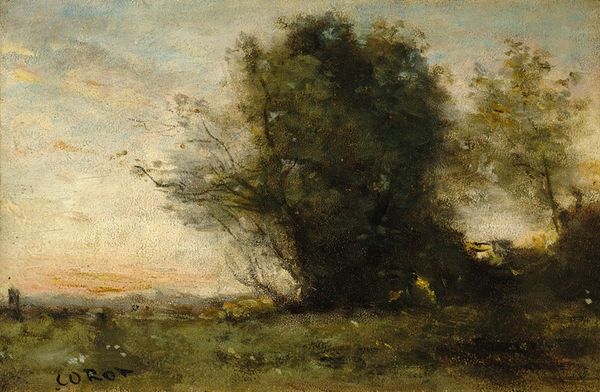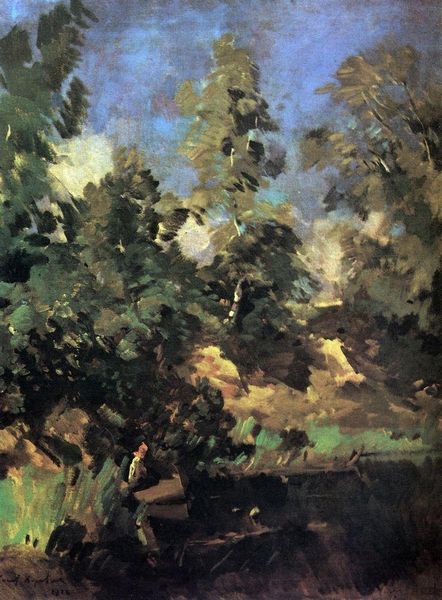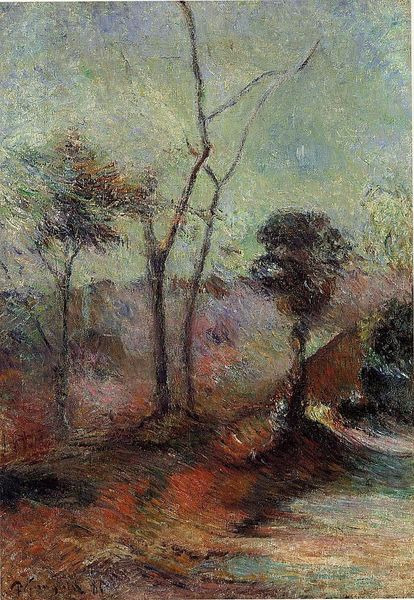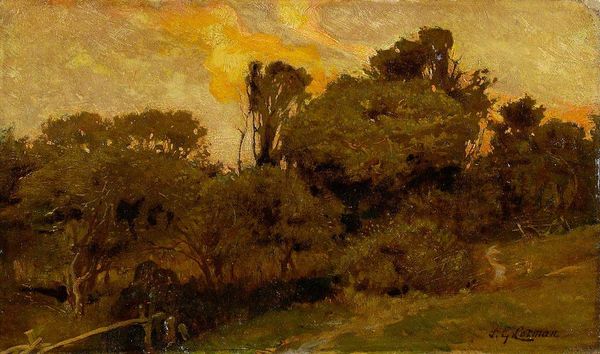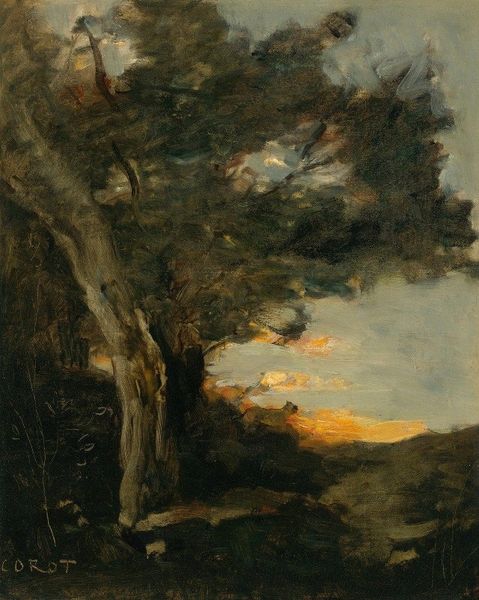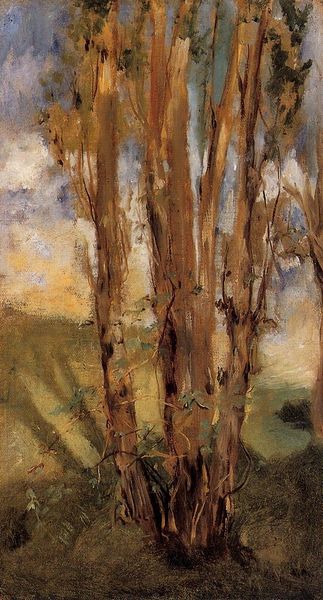
painting, plein-air, oil-paint
#
tree
#
painting
#
impressionism
#
plein-air
#
oil-paint
#
landscape
#
house
#
possibly oil pastel
#
oil painting
#
plant
#
genre-painting
#
mixed media
#
realism
Copyright: Public domain
Editor: This is Paul Gauguin’s "Tree in the farm yard," painted in 1874. It's an oil painting, and I find the composition so…domestic. It captures such a mundane, everyday scene, almost like a snapshot. What do you see in this piece, considering the period it was created? Curator: It's fascinating to consider Gauguin’s “Tree in the farm yard” within the burgeoning Impressionist movement. This piece, so rooted in the "everyday," actively participates in the changing social and political function of art in the late 19th century. Do you think this painting could have been displayed at the Salon, the official French art exhibition? Editor: Probably not? The brushstrokes seem looser than what I imagine the Salon preferred, right? More about capturing a feeling than precise detail. Curator: Exactly. The rise of Impressionism coincides with a growing middle class and a shift away from the rigid academic styles favored by the state. Paintings like this become commodities themselves, circulating within a burgeoning art market that champions individuality and modern life. Look at the way Gauguin positions the house relative to the tree: does that suggest anything to you? Editor: It’s like the tree is almost guarding the house, or maybe the house is trying to hide behind the tree? Like there's some sort of relationship there? Curator: Precisely. This relationship touches upon the symbolic interplay between nature, domesticity, and perhaps even emerging social anxieties. The framing suggests an intimacy, but also, considering the later post-impressionistic developments Gauguin was essential in defining, maybe something more – a symbolic construction. Editor: So, it's not just a pretty landscape; it's about the changing role of art and anxieties of this era! Curator: Indeed. By embracing plein-air painting and scenes from modern life, Gauguin and his contemporaries repositioned art as a reflection of contemporary social values. Editor: Wow, that really reframes how I see the painting! Curator: Hopefully. It demonstrates how a simple farm yard, painted en plein air, embodies profound historical and social currents that actively participate in the making of culture.
Comments
No comments
Be the first to comment and join the conversation on the ultimate creative platform.
